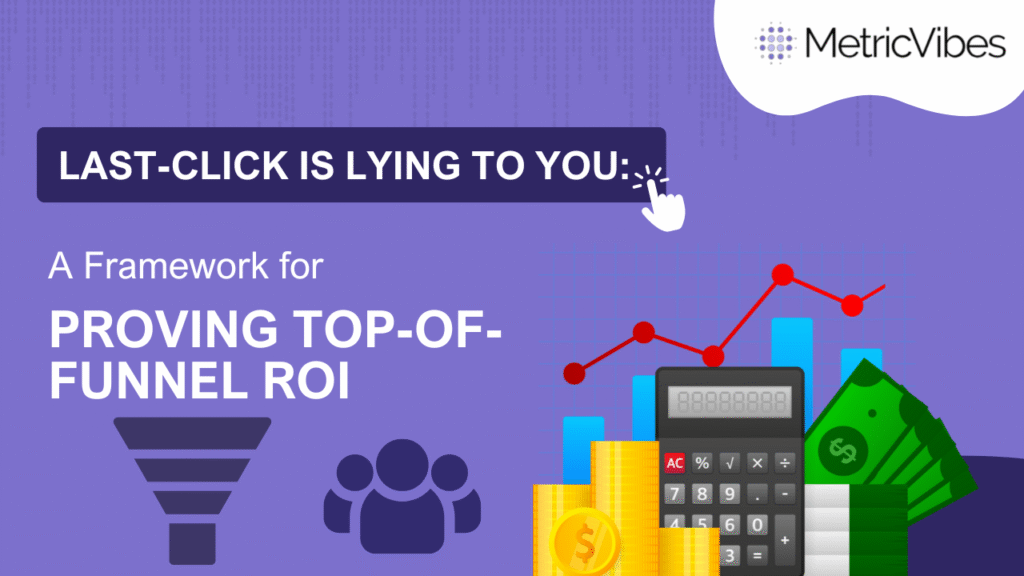Last-Click is Lying to You: A Framework for Proving Top-of-Funnel ROI
Last-Click is Lying to You: The Holistic Attribution Framework for Proving Top-of-Funnel ROI
In today’s challenging economic climate, marketing leaders face intense scrutiny to justify budgets and demonstrate the return on investment (ROI) of every campaign. The traditional “last-click” attribution model, while simple, often misrepresents the true impact of marketing efforts, particularly those crucial top-of-funnel activities that nurture leads and build brand awareness. This flawed approach creates tension with finance teams, who may undervalue long-term strategic marketing initiatives. To address this critical pain point roi beyond last click, I introduce the Holistic Attribution Framework, a strategic model designed to accurately measure and communicate the full value of your marketing investments.
This disconnect often creates a chasm between marketing and finance, hindering investment and growth. To bridge this gap, a more sophisticated approach is needed, one that aligns marketing activities with quantifiable business outcomes. Enter the Value Staircase Framework.
The Problem with Last-Click Attribution

The problem with last-click attribution is its inherent myopia. It focuses solely on the final interaction before a conversion, neglecting the influence of previous touchpoints. Imagine a customer who first discovers your brand through a thought leadership article, then engages with social media content, subscribes to your newsletter, and finally makes a purchase after clicking a retargeting ad. Last-click would attribute 100% of the conversion value to the retargeting ad, completely disregarding the crucial role played by the earlier touchpoints in nurturing the customer’s journey.
Introducing the Holistic Attribution Framework
The Holistic Attribution Framework addresses this deficiency by incorporating a multi-touch attribution approach. This framework acknowledges that the customer journey is rarely linear and that multiple touchpoints contribute to the final conversion. It moves beyond simplistic models like first-click or last-click, embracing a more nuanced and data-driven perspective.
Framework Components
The framework comprises three key components:
Data Integration
Consolidate data from all marketing channels, including website analytics, CRM systems, email marketing platforms, and social media platforms. This integrated view provides a holistic understanding of customer interactions across the entire marketing ecosystem.Weighted Attribution Modeling
Assign weighted values to different touchpoints based on their relative contribution to the conversion. This can be achieved through various models, including linear, time decay, U-shaped, and W-shaped models, or even more sophisticated data-driven models powered by machine learning. The chosen model should reflect the specific customer journey and business objectives.Narrative Building
Translate the data-driven insights into a compelling narrative that clearly communicates the value of each marketing activity. This narrative should highlight the contribution of top-of-funnel activities to lead generation, brand awareness, and ultimately, revenue. Visualizations and dashboards can effectively communicate these insights to stakeholders.
The Benefits of a Holistic Attribution Framework
By implementing the Holistic Attribution Framework, marketing leaders can gain a deeper understanding of the customer journey, optimize budget allocation, and effectively communicate the full impact of their marketing efforts. Instead of relying on the misleading simplicity of last-click attribution, this framework provides a more accurate and comprehensive view of marketing ROI, fostering greater alignment between marketing and finance teams.
Looking Ahead
The future of marketing measurement lies in embracing a holistic view of the customer journey. By adopting a data-driven and nuanced approach, marketing leaders can not only demonstrate the value of their investments but also drive more effective and impactful marketing strategies.
FAQ Section
It ignores the influence of all touchpoints except the final one, leading to an incomplete and often misleading picture of marketing effectiveness.
Consider your specific customer journey, industry benchmarks, and the complexity of your marketing ecosystem. Experiment with different models to find the one that best reflects your data.
Reach out for tailored analytics and personalization solutions for your business by us. Contact Here

